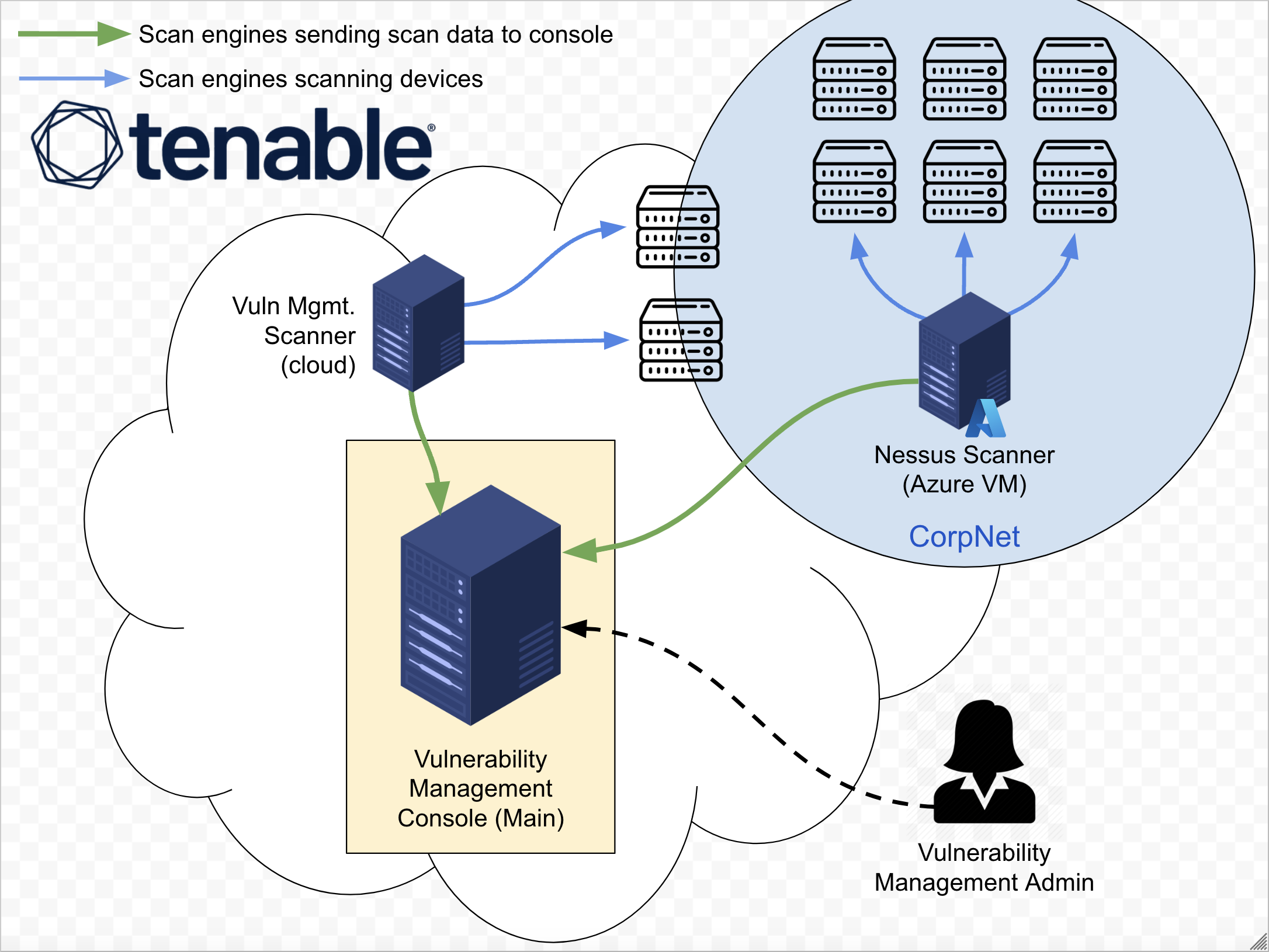
End-to-End Vulnerability Management Program Implementation
Established a structured vulnerability management program from the ground up, successfully navigating policy creation, stakeholder collaboration, and implementing targeted remediations across Azure-based environments.
Technologies Used
Key Features
Project Overview
This project demonstrates the end-to-end implementation of a comprehensive vulnerability management program for an organization without existing vulnerability management policies or procedures. The initiative began with crafting a formal vulnerability management policy, gaining stakeholder buy-in, and progressed through multiple remediation cycles focused on a simulated vulnerable Windows Server environment. Through strategic planning and technical interventions, the project achieved significant security improvements and established a sustainable framework for ongoing vulnerability management.

Figure 1: Vulnerability Management Environment Architecture
Technical Implementation
The implementation process followed several key phases, beginning with policy development and stakeholder engagement, followed by technical execution. Initial credentialed scans using Tenable identified 29 vulnerabilities across various severity levels. A phased remediation approach targeted specific vulnerability types: third-party software removal (Wireshark), secure Windows OS configuration (protocols, ciphers, and guest account group membership), and Windows OS updates.
Custom PowerShell scripts automated the remediation process, allowing for efficient implementation and verification. The project achieved impressive results: 100% resolution of critical vulnerabilities, 88.89% reduction in high-severity vulnerabilities, and 70.59% reduction in medium-severity vulnerabilities, resulting in a 75.86% overall vulnerability reduction. The established framework now serves as the foundation for ongoing vulnerability management, including scheduled scans, patch management, and continuous improvement processes.